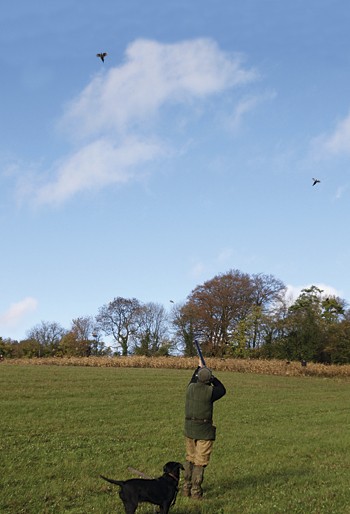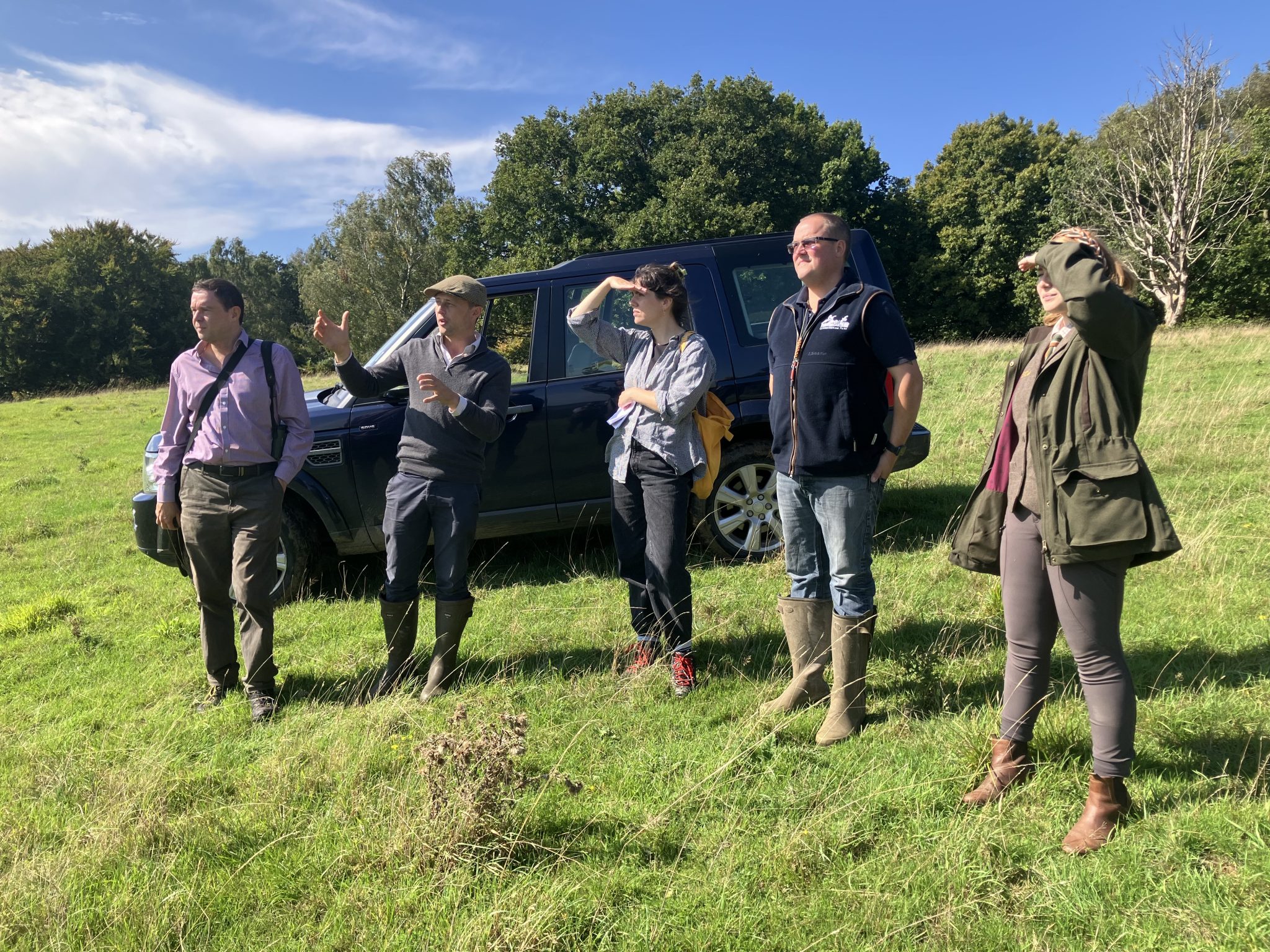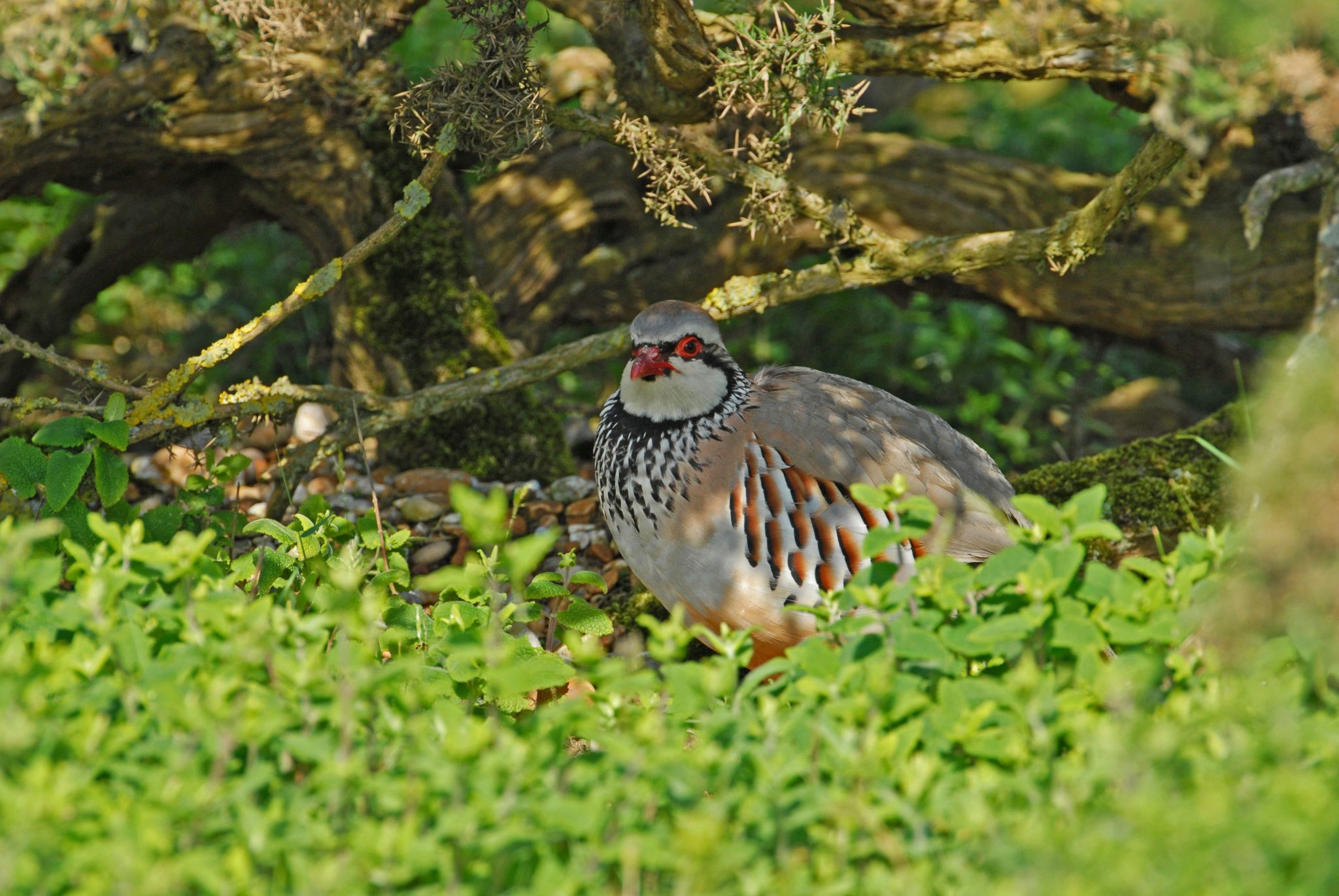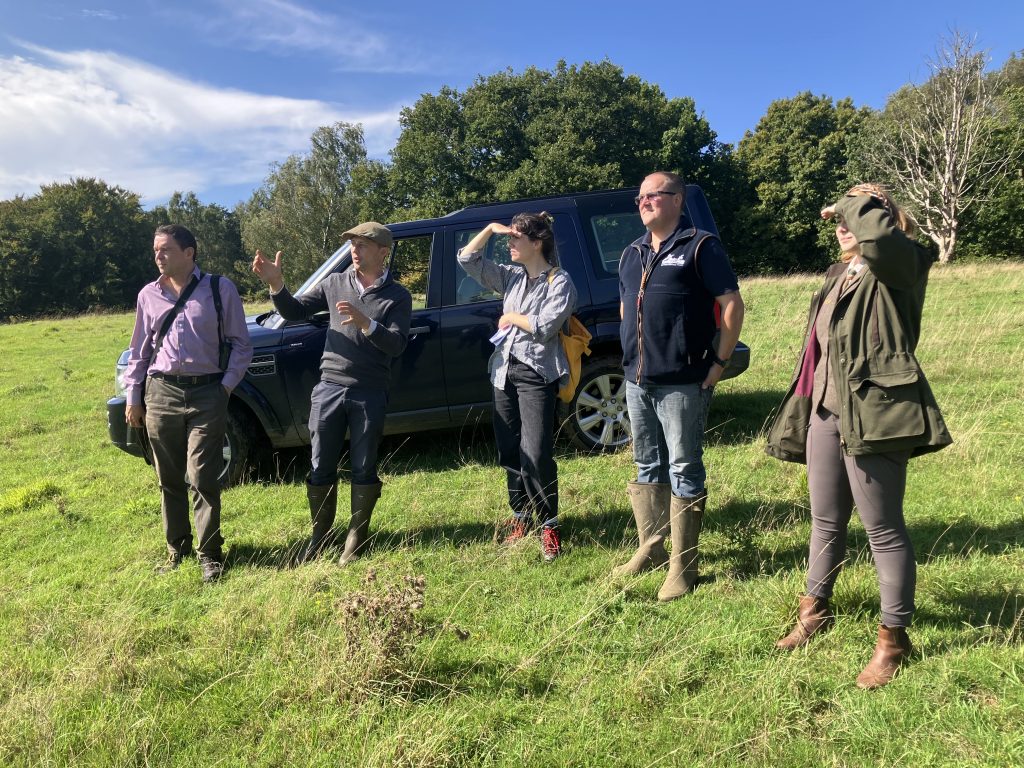Win CENS ProFlex DX5 earplugs worth £1,149 – enter here
Shoot report – Well End Shoot
<strong>David Frost reports on a genial shoot in the Chiltern Hills, where the challenging partridges and pheasants more than compensate for the rain</strong>

The Chilterns are a great place for shooting and, in consequence, the area has some prestigious and expensive shoots. Happily, however, you don?t have to spend a fortune for a decent day out and the shoot at Well End Farm is a good example of enjoyable sport at a modest cost.
Having been blessed with brilliant sunshine the last time I visited a shoot for Shooting Times, the rain gods decided to get their revenge on Armistice Day. Galeforce winds blew curtains of rain across the sodden landscape and the prospects for both shooting and photography looked bleak. As the poor dears couldn?t possibly walk to school in such weather, every mother in the county was clogging up the roads and the journey from my home to the shoot took twice as long as it should have done. Haven?t they heard of waterproofs and wellingtons?
The day started with a cholesterolladen breakfast in the shoot lodge ? the upmarket description of an old cowshed. This is the sort of shoot where everyone pitches in together and there?s none of the ?them and us? division that you find in some places. Though the lodge is fine as a base, it isn?t suitable for lunch, so Guns, beaters and pickers-up decamp to a local pub at the end of the day where the Guns fund the meal. This set up leads to the jolly atmosphere that makes this type of shoot such fun. Small wonder that the beating and picking-up teams remain largely unchanged from season to season.
The first drive was The Gravel Pits, named after former gravel workings and owned by one of the Guns. The pits have been backfilled and for the past two or three years have provided some exciting partridge shooting. The early
birds caught the Guns by surprise as they lifted over the bank of topsoil that will eventually cover the area. Others took advantage of the wind and soared off over some trees. Nevertheless, there was some nice shooting and a respectable number of birds was put in the gamecart.
A land fit for partridges
Next up was Pigeon House, on the main farm. Here, a strip of covercrop runs alongside a shelter belt of trees. I walked over to join the beaters for this one. Well End is now farmed organically by Richard Lunnon, the son of the shoot?s founder, and my route lay across a field of clover. So much of the Chilterns is now arable that it?s nice to see a patch of green that isn?t cereal. I suspect that the birds appreciate the variety, too.
Proving that the best-laid plans often go astray, the beaters were disappointed to see a couple of large coveys of partridges and a few smaller ones, totalling perhaps 100 birds, fly back over their heads against the wind. They were probably on their way to the neighbouring shoot whence they had originally come. The pheasants were more obliging and flew both down and across the wind over the Guns. In the poor visibility, it was difficult to see who was shooting well, but several high birds were brought down.
By now it was nearly 11am, so proceedings came to a halt while we observed two minutes? silence. Then it was back to the lodge for some coffee. I took advantage of the break to talk to Geoff Fitchew, the shoot captain, and Bob Pook, the keeper. Geoff explained that the shoot had been set up 30 years ago by the late John Lunnon as a farmers? shoot. Nowadays, the farming community is much smaller and gradually, the farmers have dwindled in number to be replaced by other syndicate members. Geoff has been the shoot captain for about 10 years. He remembered that when he joined, a day?s shooting cost £70, but they only shot about 40 head. Nowadays, the bag is well in excess of this.
The land, said Bob, is typical Buckinghamshire downland with underlying chalk. The gamecrops are drilled by a neighbouring farmer. Kale has been tried but gets decimated by flea beetle, so maize is the preferred crop. Despite the dry summer, it has grown well this year. The gamecovers have been enlarged in recent years, but otherwise remain unchanged since the shoot started. The old gravel pits are a newer addition and Bob has been experimenting to find the best way of laying out the drives. The optimum solution seems to be one block of cover driven out towards the lodge with the Guns placed around one corner. There used to be duck shooting before gravel extraction was extended and Bob is optimistic that the back-filling will be sufficiently advanced within three years for a duck drive to be reinstated.
Bob acknowledged that the land is particularly well suited to partridges. The acreage is too small for much of a partridge operation, but other shoots in the valley release birds that often find their way to Well End.
Suburban shooting
Fortified with coffee and a bacon roll, we set off for The Round Copse. This little copse is one of two pieces of woodland on the shoot and is joined to an adjacent hedge by a couple of strips of maize. Unfortunately, it could only be driven one way and that was into the strong wind. The birds by now were well soaked and reluctant to fly high. The Guns were commendably selective and only took the few that reached a decent height.
It?s here, and at the previous drive, that you realise how small an area the shoot covers ? scarcely 300 acres. It is bounded to the south and west by busy roads and to the east by houses. It?s in the gardens of the latter, and sometimes on their roofs, that birds occasionally fall. Fortunately, the owner of the house with the largest and most strategically placed garden is a keen shooting man and has a Gun in the syndicate. Some of the other neighbours are sympathetic, but one or two are not and that can result in Guns having to be selective in what they shoot.
Well End has four and sometimes five pickers-up. In relation to the size of the bag, this is a strong team and it?s good to see picking-up being taken so seriously. There?s a good mix of springers, cockers and Labradors that leave the red kites meagre pickings. An old electric golf buggy is used as the gamecart. I wonder if other shoots have such a green vehicle?
The morning?s mix of drizzle and rain turned into a deluge at the end of the drive and we all got soaked. Then, miraculously, the sun came out for Dolly?s Wood, the last drive of the day. This is one of the most difficult drives to manage, as the birds seem to have a mind of their own. Some swing out hard left and others hard right as they exit the wood. Only a few are sufficiently naive to fly down the middle and over the Gun line. When they do, they provide testing shots, as the Guns are mostly in a small valley.
The shoot only has five drives and as the bag had been achieved, it was time to pack up and retire to the pub. Geoff is careful not to overshoot the land. The syndicate has 11 members, some with a full gun and others a half. They shoot eight days at fortnightly intervals with a beaters? day at the end of the season. Sometimes, if the remaining stock permits, there?ll be a let day.
I must admit that this is a shoot I?ve got to know well in recent years. We hear a lot about big bags and the cost of shooting and should be grateful for the people who spend the money to keep such places going. However, there?s more than one way of enjoying a day out and there are thousands of shoots across the land that provide good sport at an affordable cost in the way that Well End does.
Related Articles
Get the latest news delivered direct to your door
Subscribe to Shooting Times & Country
Discover the ultimate companion for field sports enthusiasts with Shooting Times & Country Magazine, the UK’s leading weekly publication that has been at the forefront of shooting culture since 1882. Subscribers gain access to expert tips, comprehensive gear reviews, seasonal advice and a vibrant community of like-minded shooters.
Save on shop price when you subscribe with weekly issues featuring in-depth articles on gundog training, exclusive member offers and access to the digital back issue library. A Shooting Times & Country subscription is more than a magazine, don’t just read about the countryside; immerse yourself in its most authoritative and engaging publication.







